In this article, we will provide some solutions to fix the 0xc00002e3 BSOD error code. According to the reports, users encountered this error after installing the latest Windows Update or upgrading their Windows OS. Some users also reported that this error occurred while performing the Clean Installation of Windows OS.
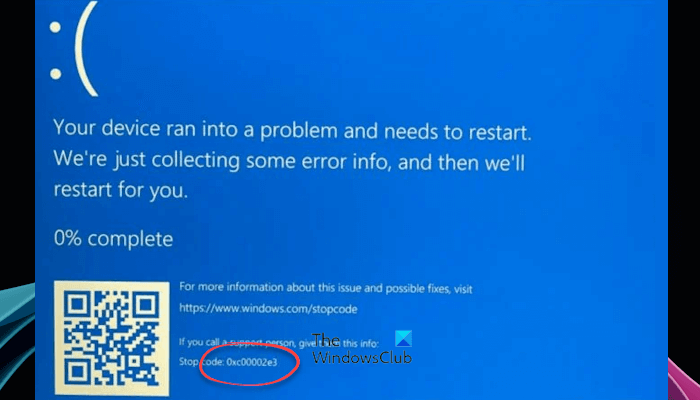
The STATUS SAM INIT FAILURE, 0xC00002E3 Blue Screen, occurs due to the failure in the initialization of the Security Accounts Manager (SAM), which is part of the Registry that contains a database of usernames and passwords. This security feature ensures that the entered username and password match a combination listed in the database, which allows the user to access the system. If there is a mismatch or data corruption, this Stop Error can occur.
Fix 0xc00002e3 Blue Screen Error Code on Windows 11/10
To fix STATUS SAM INIT FAILURE, 0xC00002E3 Blue Screen on Windows computers, follow these suggestions:
- Update Windows or remove recently installed update
- Run Startup Repair
- Rebuild BCD and fix MBR
- Run SFC and DISM scans
- Reset your PC
Let’s see all these fixes in detail.
1] Update Windows or remove recently installed update
Make sure that you are using the latest version of Windows. You should check for Windows Update and install the same (if available). You can check for Windows Update manually via Windows 11/10 Settings.
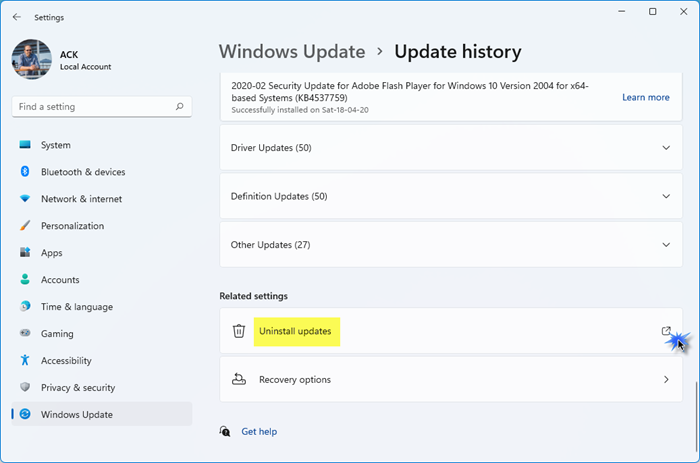
If the BSOD started occurring after installing a Windows Update, uninstalling the recently installed Windows Update will fix the issue. If the BSOD is occurring frequently and are unable to sign in to your system, you can uninstall the Windows Update via Windows Recovery Environment. After entering Windows Recovery Environment, go to Advanced Options > Troubleshoot > Advanced Options > Uninstall Updates.
2] Run Startup Repair
Startup Repair is an automated repair tool in the Windows operating system. Running the Startup Repair is helpful when you are unable to use your system due to an error. If the BSOD error 0xc00002e3 is preventing you from logging in to your system, you can enter Windows Recovery Environment to fix the problem.
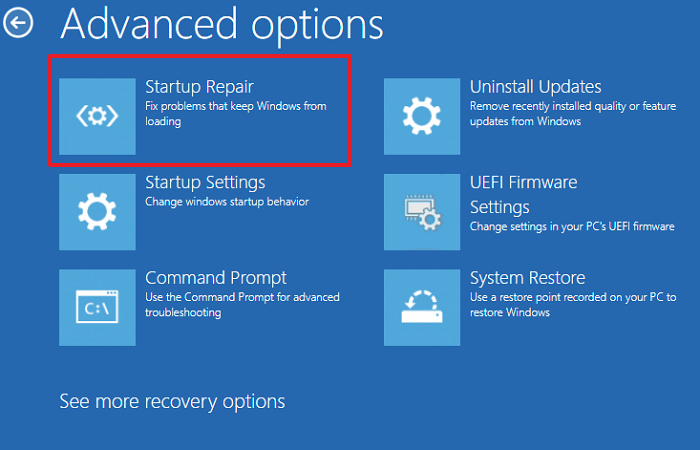
If, due to the BSOD error, you are in a situation where you can no longer use your system, you can enter Windows RE by interrupting the normal boot process. Follow the steps provided below:
- Press and hold the power button to turn off your computer completely.
- Turn on your computer.
- When you see the manufacturer’s or Windows logo, press and hold the power button immediately to turn off your computer again.
- Repeat the above steps until you see the Preparing Automatic Repair screen.
- Now, select Advanced Options > Troubleshoot > Advanced Options > Start-up Repair.
Let the Startup repair be completed. After that, see if the BSOD occurs again.
3] Rebuild BCD and fix MBR
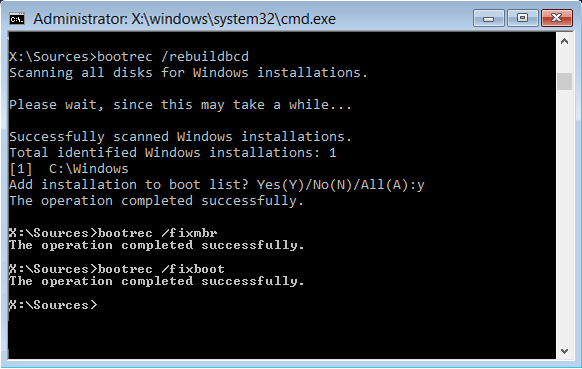
BCD of Boot Configuration Data stores the boot information of your computer. A corrupt BCD results in boot issues. A corrupt Master Boot Record can also cause boot issues. Hence, you can also experience the failure of Windows update or Windows installation due to this. We suggest you fix MBR and rebuild BCD and see if it helps. Enter Windows Recovery Environment by interrupting the normal boot process and then launch the Command Prompt to rebuild BCD and MBR.
If your hard disk partition style is GPT, you need not execute the command to fix MBR. In this case, you can directly run the command to rebuild the Boot Configuration Data file. You can check the partition style of your hard disk in the Disk Management.
4] Run SFC and DISM scans
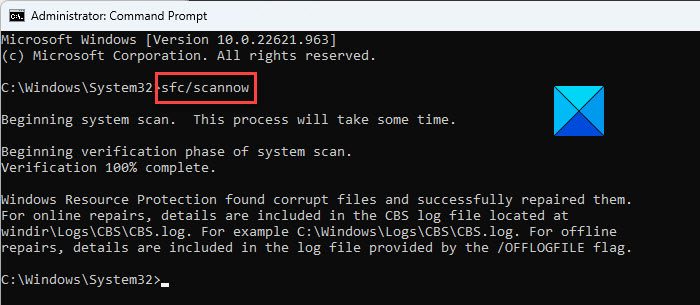
Corrupted system files can also cause several issues. When a BSOD occurs, Windows restarts automatically. If the BSOD error 0xc00002e3 is not occurring frequently, you can repair your system files after signing in to your system and see what happens. Run System File Checker to repair the damaged or corrupted system image files.
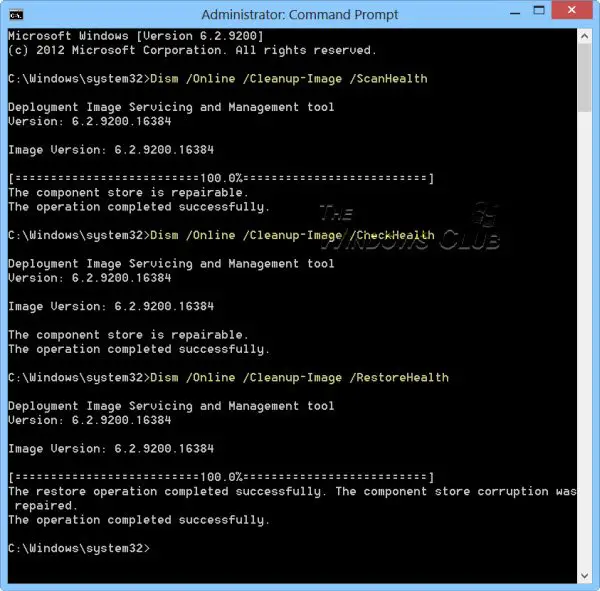
After running the SFC scan, run the DISM scan. Let both scans be completed. After that, monitor your system if you see the same BSOD error again.
5] Reset your PC
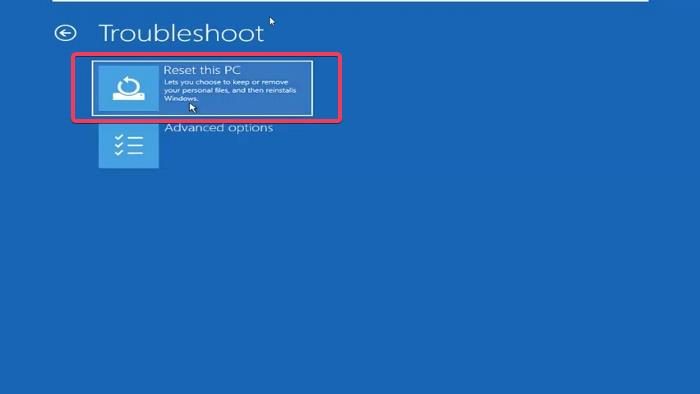
If the BSOD error 0xc00002e3 occurs frequently, we suggest you reset your PC. If you can manage to log in to your system, you can use Windows 11/10 Settings to reset your PC. Otherwise, you have to enter the Windows Recovery Environment for the same.
That’s it. I hope this helps.
Can I fix Blue Screen error?
A Blue Screen error occurs due to many causes. Both hardware and software issues are responsible for the BSOD errors on a Windows PC. You can fix Blue Screen errors. If a Blue Screen is occurring due to a hardware fault, like damaged RAM, replacing the RAM will fix the error. Hence, you have to troubleshoot the BSOD error to fix it.
Can RAM cause Blue Screen?
Yes, a faulty RAM can cause Blue Screen errors. RAM is hardware and faulty hardware can cause BSOD errors on a Windows computer. If your system is showing the symptoms of a faulty RAM, you may encounter a BSOD error on your system.
Read next: Fix 0xC000021A Blue Screen Error on Windows.
Leave a Reply